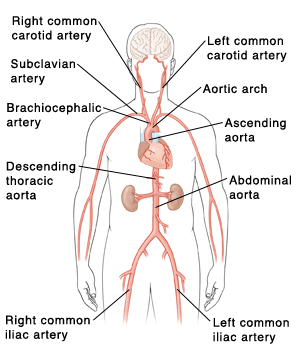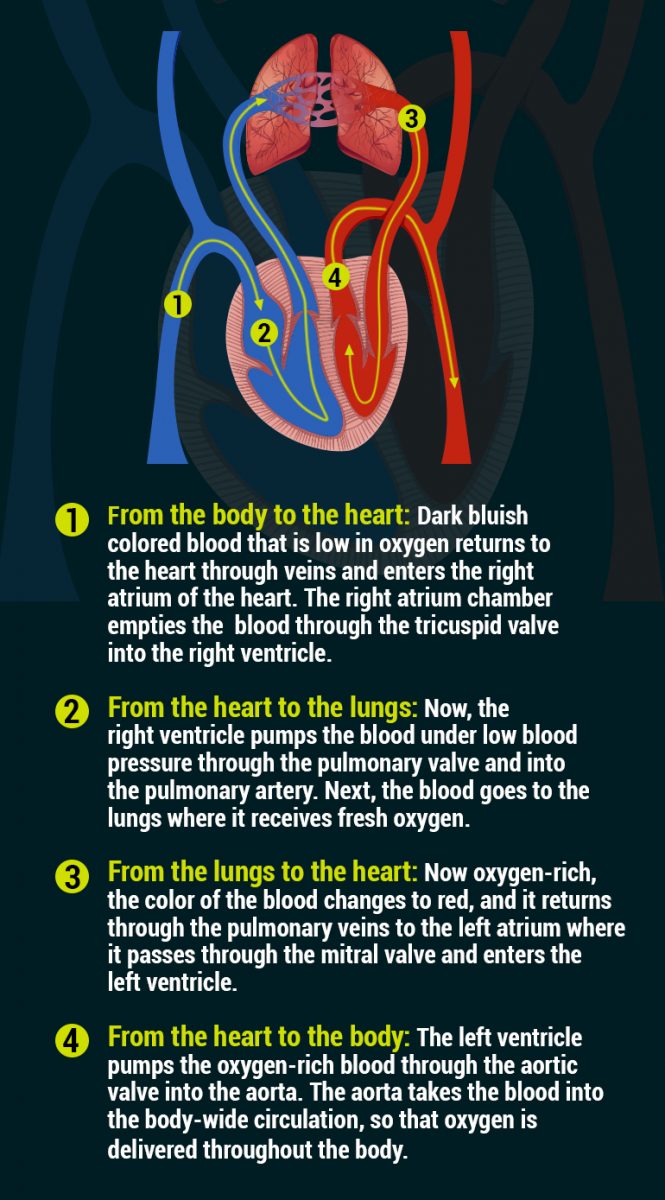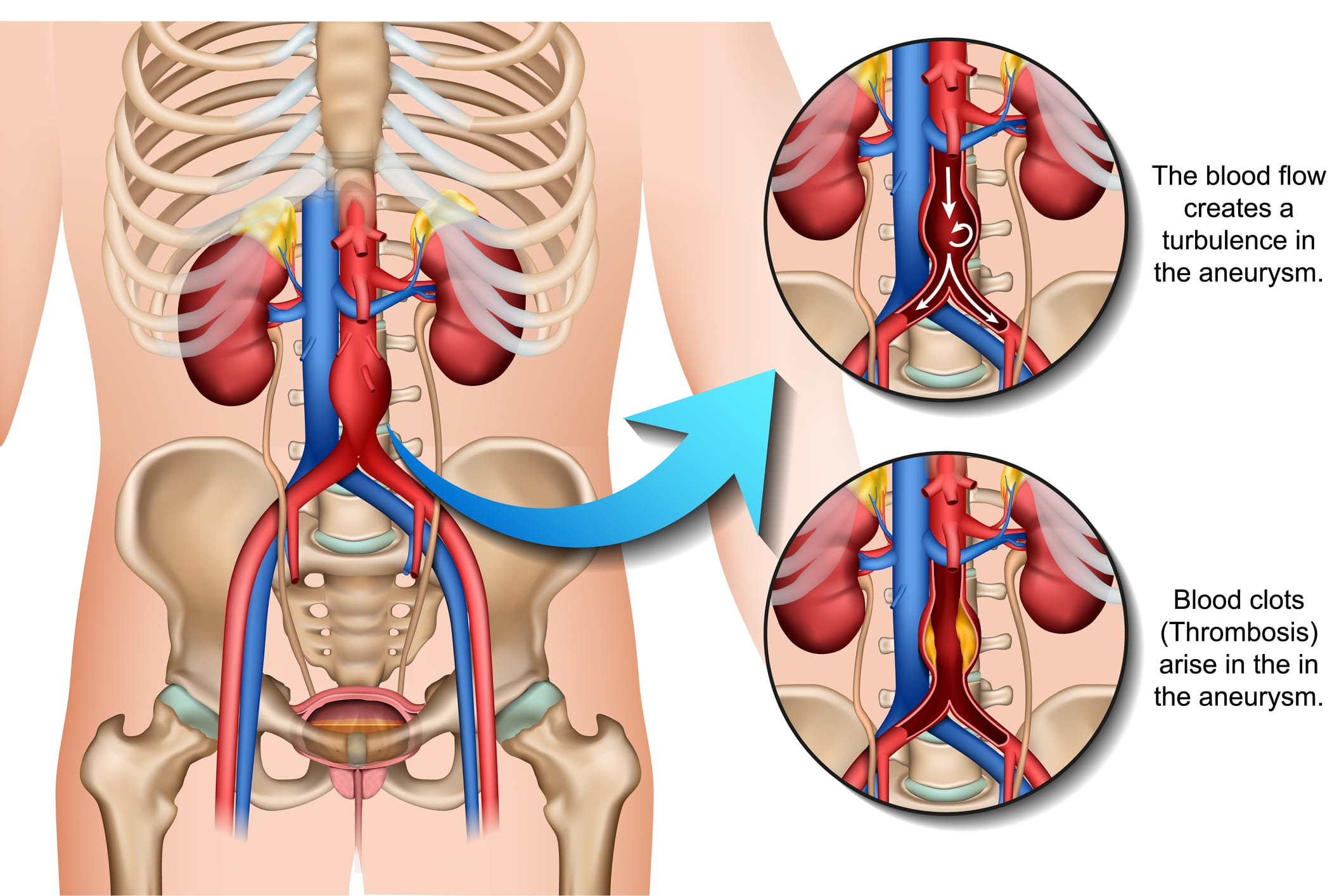Home » Health Education » Learn More Abdominal Aortic Aneurysms (AAA)
What is an Abdominal Aortic Aneurysm (AAA)?
The word “aneurysm” might make you nervous, but you don’t have to panic. While an AAA is definitely something to be aware of, it often doesn’t actually affect your day-to-day. The problem is more about the risk it presents for the future than the aneurysm itself.
An AAA is what we call it when the aorta — the largest artery in your body — balloons in your abdomen. (The aorta branches off into all your smaller arteries and carries blood from your heart to the rest of your body.) It most commonly occurs in people over 50, with white males being the most at risk.
The biggest issue with AAA is that if it’s left untreated, it might eventually rupture. When the artery wall weakens and splits — or bursts entirely — it means internal bleeding, which makes it an emergency medical situation.
The risk of rupture depends on size — the bigger the aneurysm, the greater the risk. More often than not, small aneurysms don’t become an issue, but the stakes for larger ones are high: nearly 80 percent of people who do experience a rupture will not survive as long as it can take for medical personnel to reach them.
So while living with an AAA isn’t necessarily the end of the world, it’s crucial to know where you stand and whether you need treatment.
How Your Aorta is Supposed to Work
While you may have heard people use the words “vein” and “artery” interchangeably, they in fact have different jobs. Veins carry low-oxygen blood from throughout the body to the heart to be oxygenated. To do this, the heart takes oxygen from the lungs and infuses it into the blood that moves through the four chambers of the heart. Arteries then take this oxygenated blood away from the heart to the parts of the body that need it to function such as muscles, organs and the brain.
As you’ll remember, the aorta is the largest artery in your body. It takes the oxygenated blood from the heart’s left ventricle (lower chamber), passes over the heart and runs down in front of the backbone. The lower section of the aorta is called the abdominal aorta, where AAAs occur. The aorta is critical for bringing oxygen to other organs in the body. Every cell in your body needs oxygen to create energy (in other words, to live). If the aorta is hindered, so is the rest of your body.
What causes AAA?
AAAs most often occur due to a buildup of plaque in the artery over time, but it can also be caused by injury or infection.
Plaque is a fatty substance made up of several components like cholesterol, calcium, cellular waste and fibrin (a blood-clotting substance). When plaque builds up along the artery walls, the passageway narrows, making it more difficult for blood to pass through and putting additional pressure on the walls. The pressure weakens the artery walls, which can cause an aneurysm (bulging).
Increased arterial plaque buildup can often result from diet and lifestyle, like consuming foods high in “bad” cholesterol (low-density lipoproteins or “LDLs”), smoking, and a lack of exercise.
How do I know if I have AAA?
Abdominal aortic aneurysms don’t typically cause noticeable symptoms, so getting screened is the best way to know for sure whether you have one. Again, the greatest risk to your health is not the effects of the aneurysm itself, but the potential for a rupture. It’s critical to know ahead of time whether or not you have an AAA to avoid a medical emergency.
An AAA screening is a non-invasive procedure that takes a quick scan of your abdomen and measures the aorta at key areas, looking for any abnormalities.
Because it’s unlikely you’d be experiencing symptoms, getting screened for an abdominal aortic aneurysm (AAA) may not be at the top of your priority list. But in this case, what you don’t know actually can hurt you. If you exhibit any risk factors for AAA, taking some time to get informed about your health with a simple and pain-free screening could save your life.
Should I get screened?
Some people are more at risk for AAA than others due to tobacco use, high blood pressure and/or cholesterol, obesity, family history, age, and even gender. (AAA is most common in white males over 65.)
As mentioned above, the problem with waiting until you experience any sort of symptoms to get screened is that many people with AAAs experience no symptoms at all until it’s too late.
All adults age 50 and up should get screened every 1–3 years, but if you exhibit one or more of these risk factors, you should start screenings at age 40, particularly for males:
- High blood pressure
- High cholesterol
- Smoking
- Obesity
- Family history of AAAs
- Other aneurysms
- Emphysema
What happens at an AAA screening?
An AAA screening is actually an easy and painless experience. The first thing to know is that there are no needles and you don’t have to wear any awkward hospital gowns. All of your clothes stay on. A screening is performed by a trained sonographer, which is someone who uses an ultrasound machine to gather information about the inside of your body, as is done for pregnant women.
The sonographer has you lie on your back and then takes a quick scan of your abdomen. This scan measures the aorta at different key areas, as well as any areas that show ballooning. The whole thing takes about 10-15 minutes from beginning to end. Once you’re done, everything is sent off to a board-certified physician who then reviews the images and measurements, and results are sent to you within 21 days, along with an explanation of what they mean.
What if I have an AAA?
If you have an AAA, you’ll be encouraged to visit your healthcare provider to create a plan of action. The goal of treatment for AAAs is simply to prevent rupture.
Sometimes, if the aneurysm is small, your doctor will recommend simply monitoring the issue — checking in regularly to ensure it stays small and does not grow quickly — rather than recommending a treatment right away. You may also be encouraged to change your diet and increase your exercise level to prevent further plaque buildup.
If the aneurysm is larger, your doctor may recommend surgery to reinforce or replace the weakened part of the artery wall with a graft (a synthetic tube) and prevent a future rupture. Sometimes the treatment is open abdominal surgery, but often the less-invasive process of endovascular repair does the trick. This includes inserting a tiny tube through an artery in your leg to attach the graft.
Can I Prevent an AAA?
While we can’t guarantee prevention entirely, there are several things you can do to reduce your risk. Remember, AAAs are caused by plaque building up in your arteries, so minimizing plaque buildup is the best way to avoid developing an aneurysm.
There’s no single contributor to arterial plaque, but doctors have pinpointed several factors that increase buildup faster in certain individuals. High blood pressure is a big one, as is consuming large amounts of cholesterol. Smoking can speed up the process as well. Stress can also be a factor, which might feel like something you have no control over, but there are a lot of great resources out there like meditation apps and healthy coping techniques to help manage the stress levels.
Other ways of reducing your risk include avoiding fried foods and other food high in fat and LDL (“bad” cholesterol) and keeping your body moving.
Many of us live fairly sedentary lifestyles, so getting up and moving around is important for your overall health. You don’t have to join a gym or sign up for a marathon to lower your risk. Just take a step in the right direction. Start small with something like a morning walk or a weekly basketball game with friends. Take a 10-minute break from your computer each hour to walk around your house or take a stroll outside. You can even try something new, like yoga or swimming laps.
Making it fun is the best way to make it stick. Remember, new practices require repeating several times before they become habits; most take at least a month to become routine. Set a reminder, enlist an accountability partner, and don’t give up, even if you miss a couple days.
Then there are a few factors that are completely out of your control, but that you should still be mindful of, like family history. Even if you are perfectly healthy, if something runs in your family, it’s important to keep a close eye on it regardless. You may never develop the same illness or condition, but be aware of your increased risk level.
The Bottom Line
Get screened for an abdominal aortic aneurysm (AAA) if you are over the age of 50, especially if you’re male. People living with AAAs often don’t experience symptoms, but when a rupture occurs, it’s bad news. So be sure to get screened regularly — it could be the difference between a minor surgical treatment and a medical emergency.
Peace of Mind With Life Line Screening
At Life Line Screening, we have years of experience helping people prevent major medical issues with vital early detection services, including AAA screenings. We partner with community centers to help people get quick, easy access to the screenings they want to stay on top of their health.
Schedule a screening online or give us a call at 800.718.0961. We’d love to help.
Topics:
Abdominal Aortic Aneurysm



